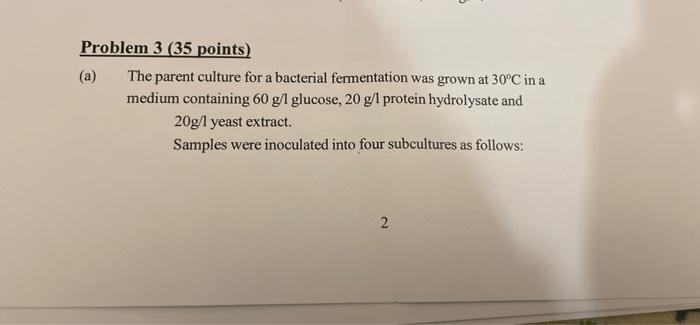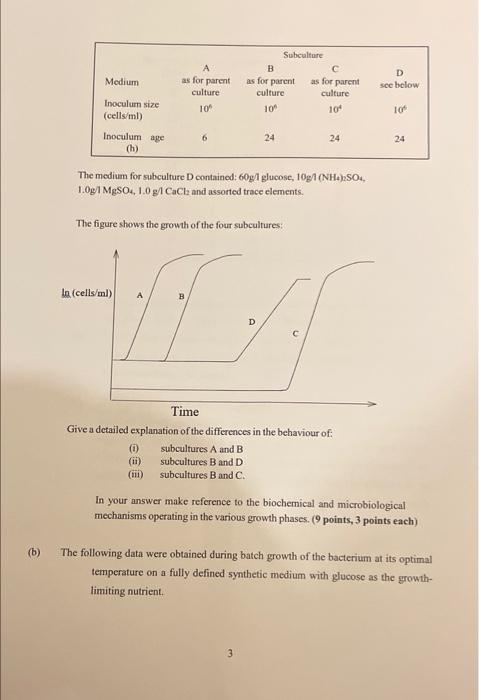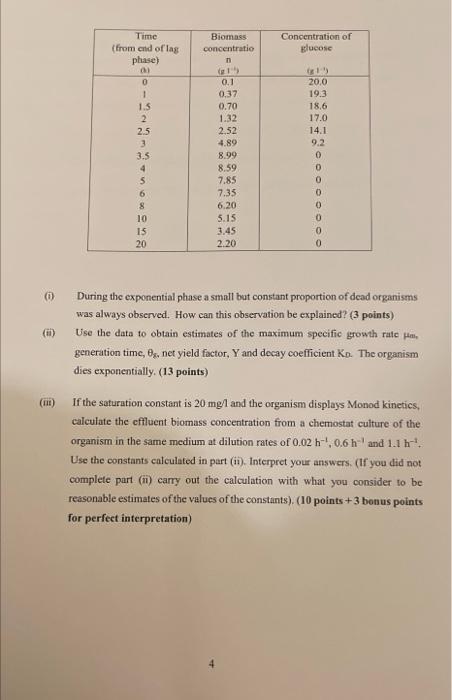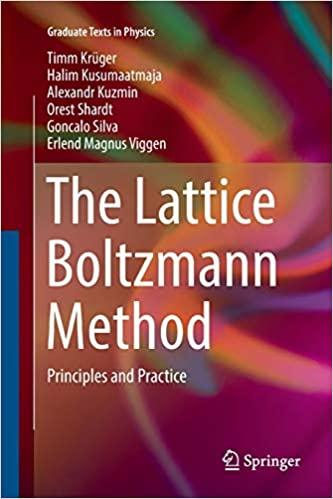Problem 3 (35 points) (a) The parent culture for a bacterial fermentation was grown at 30C in a medium containing 60 g/l glucose, 20 g/1 protein hydrolysate and 20g/l yeast extract Samples were inoculated into four subcultures as follows: 2 Medium A as for parent culture 10 Subculture B as for parent as for parent culture culture 10 104 D see below 10+ Inoculun size (cells/ml) Inoculum age (h) 6 24 24 24 The medium for subculture contained: 60g1 glucose, 1001 (NH):SOL, 1.0g1 MgSO4, 10 g/l CaCl and assorted trace elements. The figure shows the growth of the four subcultures: lo (cells/ml) B D Time Give a detailed explanation of the differences in the behaviour of (0) subcultures A and B (ii) subcultures B and D (iii) subcultures Band C. In your answer make reference to the biochemical and microbiological mechanisms operating in the various growth phases. (9 points, 3 points each) (b) The following data were obtained during batch growth of the bacterium at its optimal temperature on a fully defined synthetic medium with glucose as the growth- limiting nutrient 3 Time (from end of las phase) Biomass concentratio n Concentration of glucose 0 1 1.5 2 25 3 3.5 0.1 0.37 0.70 1.32 2.52 4.89 8.99 8.59 7.85 7.35 6.20 5.15 3.45 2.20 20.0 19.3 18.6 17.0 14.1 9.2 0 0 0 0 0 0 0 0 4 5 6 8 10 15 20 0 (1) During the exponential phase a small but constant proportion of dead organisms was always observed. How can this observation be explained? (3 points) Use the data to obtain estimates of the maximum specific growth rate generation time, 0s, net yield factor, Y and decay coefficient Ko The organism dies exponentially. (13 points) (m) If the saturation constant is 20 mg/l and the organism displays Monod kinetics, calculate the effluent biomass concentration from a chemostat culture of the organism in the same medium at dilution rates of 0.02 h-!.0.6 h and 1.1 h. Use the constants calculated in part (1). Interpret your answers. (If you did not complete part (1) carry out the calculation with what you consider to be reasonable estimates of the values of the constants). (10 points +3 bonus points for perfect interpretation)









